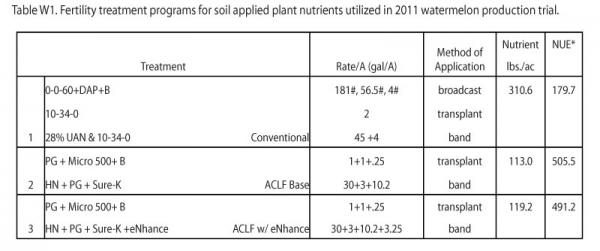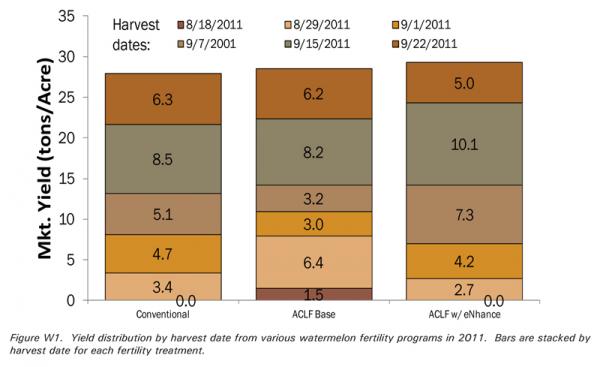Researchers compare liquid and conventional fertilizers for impact on melon yields
Commercial watermelon production usually ramps up during the summer months, especially around the Fourth of July weekend. But consumer demand doesn’t end there. Growers must continue to produce a continuous supply of good-quality melons throughout the summer if they want to see a profit at the end of the season. Yields matter, and fertilizer plays a large role in improving yields.
Fertilizer costs have skyrocketed in recent years. Consequently, growers are looking for ways to do more with less. They want to minimize the use of crop inputs while still maintaining or improving yields. For watermelon growers, profitability increases when they can grow larger melons and harvest more watermelons per acre. Research shows that liquid fertilizer can give growers the top-quality fruits and boost in yields they are looking for.
Conventional vs. Liquid
A recent study, undertaken by Agro-Culture Liquid Fertilizers, compared conventional and liquid fertilizer programs to see what the effect would be on the maturity, yield and quality of watermelons. Researchers conducted the study at Agro-Liquid’s Michigan-based, North Central Research Station, a facility dedicated solely to plant nutrition research.
Growers used ‘Ruby’ seedless watermelons for the replicated plot studies. After transplanting, ‘Ruby’ takes about 85 days to mature. The rinds have a characteristic double-stripe pattern and are fade resistant. Fruits have a small pip size and crisp, red flesh that is sweet to the taste.
Materials and Methods
Soil preparation for the experiment included banding or broadcasting the appropriate fertilizers down the middle of each plot area and then covering the center 2 ft. of each plot with plastic mulch. Each 30 ft. plot contained eight ‘Ruby’ seedless watermelons, spaced three feet apart, and two ‘Ace’ variety pollinator plants.
At each harvest, growers used vines to trace melons back to their home plots so they could be accurately collected and weighed. Yield evaluations did not include melons from the pollinator plants.
Researchers compared three fertility programs: conventional, Agro-Liquid base, and Agro-Liquid base with eNhance™. Agro-Liquid’s eNhance™ is a sulfur-based product with micro-nutrients which helps crops utilize nitrogen more efficiently.
Conclusions
Early season yields were best with the Agro-Liquid base program, especially for the first three harvest dates. The conventional treatment had no yield for the first harvest date on 8/18, while the Agro-Liquid base program had a 1.5 ton per acre yield. At the second harvest on 8/29, the Agro-Liquid base program was 55% ahead of the conventional program for yield.
The highest total yield for the season was the Agro-Liquid base program with eNhance™ (5% higher than conventional). Initially, the two programs had similar yields, but the Agro-Liquid base with eNhance™ program had the advantage in later harvests. (See Figure 1)
Nutrient use efficiency for the Agro-Culture Liquid Fertilizers’ programs was 2.5 times greater than the conventional program. (See Table W1)
To see the full research results, refer to “Soil applied fertilizer program comparisons for watermelon production (NCRS11-305)” in the 2011 Research Report.



